Difference between Master Boot Record (MBR) and GUID Partition Table (GPT)
Generally, MBR and GPT are two types of hard disk. You might have considered that prior to using a new hard drive, Windows will give a notice that a disk initialization using their in default Disk Management tool through the prompt phrasing “You must initialize a disk before Logical Disk Manager can access it“. Before starting the process user should choose one of the hard drive part MBR (Master Boot Record) or GPT (GUID Partition Table) to access the whole procedure.
A partition is a predefined differential component of a disk drive which is considered as a single entity by the operating system. A partition table is a table sustained on disk by the operating system showing the partitions on that disk. The terms partition table and partition map are most widely linked with the MBR partition table of a Master Boot Record (MBR) in compatible pc formats, but it may be used collectively to refer to other “formats” that split a disk drive into partitions, such as: GUID Partition Table (GPT), Apple partition map (APM), or BSD disklabel.
So before getting to know about the key differences between the disk partitions, we should get to know about the core structure of MBR and GPT.
1. MASTER BOOT RECORD (MBR)
- The Master Boot Record is the core and first entity on every disk. It is as small as 512 bytes.
- The MBR keeps the partition table for the disk and a mere amount of enacting code that checks the partition table, and finds the partition with the operating system. The MBR then notices the system partition’s beginning location on the disk, loads and transfer the boot sector and control respectively.
- Only 4 primary partitions per hard disk. These can be bootable.
- Only one can be marked active from all the primary partitions. Only that one gets booted.
- One extended partition can be inserted in spite of a primary partition. Extended partitions contains only logical partitions.
- One of the limitations is that logical partitions cannot be booted.
2. GUID PARTITION TABLE (GPT)
It is a predefined structured set of booting process for the layout of partition tables of a substantial computer storage device, a hard disk drive or solid-state drive is a typical example, executing universally distinctive identifiers, which are also known as globally unique identifiers (GUIDs). Constructing a part of the Unified Extensible Firmware Interface (UEFI) standard (Unified EFI Forum-proposed alternative for the PC BIOS), though it is also used for some BIOS systems, because of the imperfection of master boot record (MBR) partition tables, which use 32 bits for logical block addressing (LBA) of traditional 512-byte disk division.
Currently, all the models of computer system follows the principle of GPT for disk partitions. Few, inclusive of macOS and Microsoft Windows on the x86 architecture, assists booting from GPT partitions only on systems with EFI firmware, but FreeBSD and most Linux distributions can boot from GPT partitions on systems with both contemporary BIOS firmware interface and EFI.
Difference between MBR and GPT
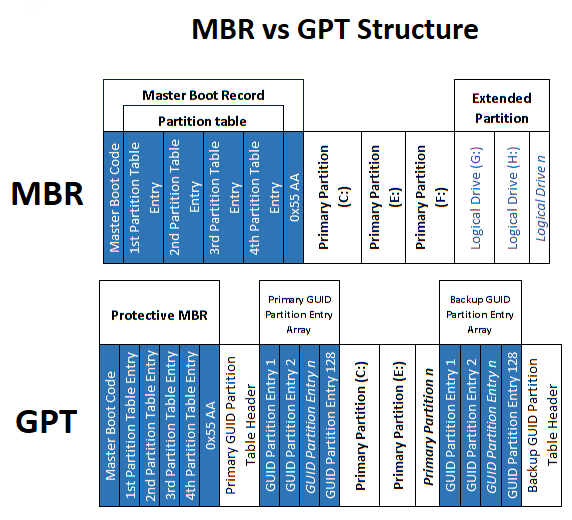
The basic difference criteria between partition structure MBR and GPR depends upon various attributes which are key differential structures of a disk management structure. Some of them are listed below:
-
Disk storage space
Disk storage space is a widespread classification of storage mechanisms where data is registered by different electronic, magnetic, optical, or mechanical changes to a surface coating of one or more rotating disks. A disk drive is a device administering such a storage mechanism. Widely used are the hard disk drive (HDD) consisting a non-removable disk, the floppy disk drive (FDD) and its removable floppy disk, and different optical disc drives (ODD) and linked optical disc media.
MBR can contain 2TB of maximum disk storage space, whereas GPT can contains more than that.
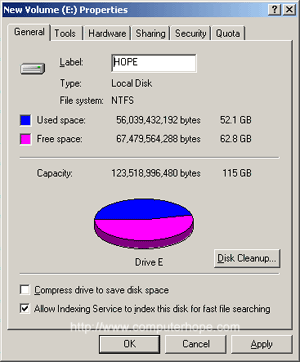
-
Number of partitions
Partitioning enables the utilization of various file systems to be installed for discrete variety of files. Dividing user data from system data can restricts the system partition from turning full and supplying the system rogues. Backing up can be easy task due to this. It is the formulation of one or more section on secondary storage, so that each sector can be taken care of separately. These regions are called partitions. And it is on the user control that to formulate number of partitions as per their need. It is classically the first stride of making a newly installed disk, before any file system is formulated. The disk contains the information and data about the partitions locations and sizes in an attribute known as the partition table that the operating system readily notes down before any other component of the disk.
MBR can have 4 primary partitions or 3 primary partitions +1 extended partition (logical partition is not limited), whereas
GPT can consist 128 primary partitions.
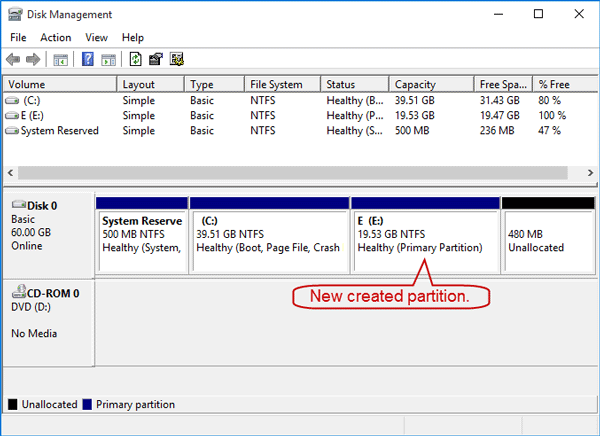
-
Firmware and Hardware interface
Most notable firmware interface is UEFI. At the time of manufacturing UEFI is the first program that is being installed and also the first one to run in a system. It keeps a continuous check to see what components device consist of such as hardware components and also wakes them up and hand over to the system for further operations. The updated attributes directs several restrictions of BIOS, comprising limitations on hard disk partition size and the quantity of time BIOS takes to execute its given operations.
MBR has BIOS as its firmware interface and GPT has UEFI as its firmware interface which is an innovation on the front of technological changes which will somehow innovate the BIOS structure.
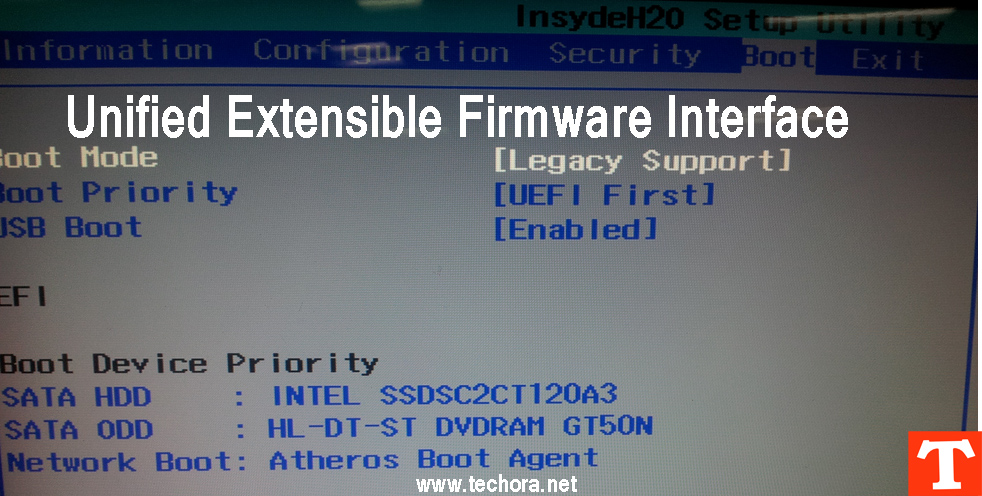
-
Operating systems
This is the program that enables a computer’s resources, mainly the assigning of those services among other programs. Simplistic resources comprise of central processing unit (CPU), computer memory, file storage, input/output (I/O) devices, and network connections. Management functions contain scheduling resource use to resist conflicts and difference among programs. The operating system takes prior rest only when the computer is turned off in comparison to other programs which can take off in the mid of system working. This is the prior operational combining structure for a computer system which is coherent in functioning all the complex as well as the contemporary working of a system.
MBR is associated with windows7 and their older versions which are now getting obsolete, whereas GPT is being comprehended Windows 10 32-bit, Windows 8/8.1/10 64-bit which gives GPT a viable advantage over MBR as users widely using the recent versions of windows.
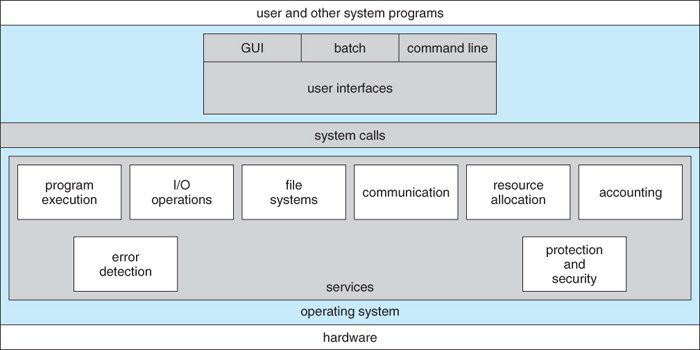
- Security details
MBR and GPT has various levels of security. Some of them are listed below-:
- If we compare, at the beginning of the disk there is a foremost or primary GUID partition table header, the backup GUID partition table header lies in the end.
- It is very important to note that GPT comprise a CRC32 checksum for self and also for the partition table. Its firmware, bootloader and operating system can execute the checksum to find out the errors in the partition table. If the errors are found on the primary GPT, it is permitted to retrieve the entire partition table from the backup GUID partition header. This is an overwhelming advantage of GPT in respect to MBR. If the partition table gets corrupted in MBR then it is of no use. In this scenario, GPT has a comparatively higher layout of security than MBR disk. GPT enables the system with greater authenticity due to unnecessary and regular redundancy check (CRC) defence of the partition table and data.
MBR VS GPT Which one is better on the account of performance?
In a nutshell, it is a belief that comparatively, GPT is better:
- It reinforces greater than four primary partitions on SSD
- It reinforces greater storage than MBR (more than 2TB)
- It is more suited with the updated UEFI enabled systems
- Safe and secured on numerous fronts
- Need of 4 operating systems. Seems OK, but for instance, Dell uses 2 of the 4 partitions for “other stuff”.
- Extended Diagnostics is being used widely in computer systems. At the time of BIOS function, user can access either BIOS-based diagnostics or much more substantial disk oriented diagnostics procedure in a different partition. The partition is being hidden by default norms. The “disk management notifies it but the user is being unable to delete it.
- Recovery is one of the vital attributes of this as it enables the user to recover their data at any time.
There is one vital limitation attached to GPT as if the need of hardware, software and firmware cannot be met then there is only one alternative left and that is to use MBR. The vital reasons could be as follows-:
- The System motherboard doesn’t support UEFI boot
- The user still use an old Windows OS
- The System is being installed with 32bit Windows 7
Conclusively, the user has to choose one according to their respective needs which might enable the system to work efficiently and in a secured manner.
Table of Contents
